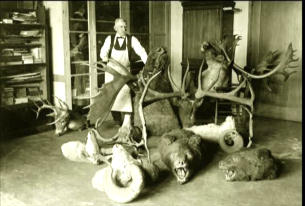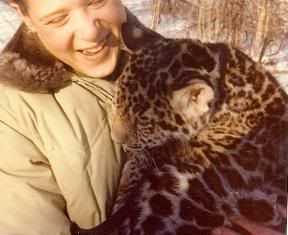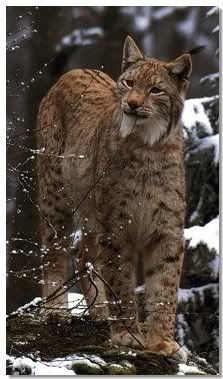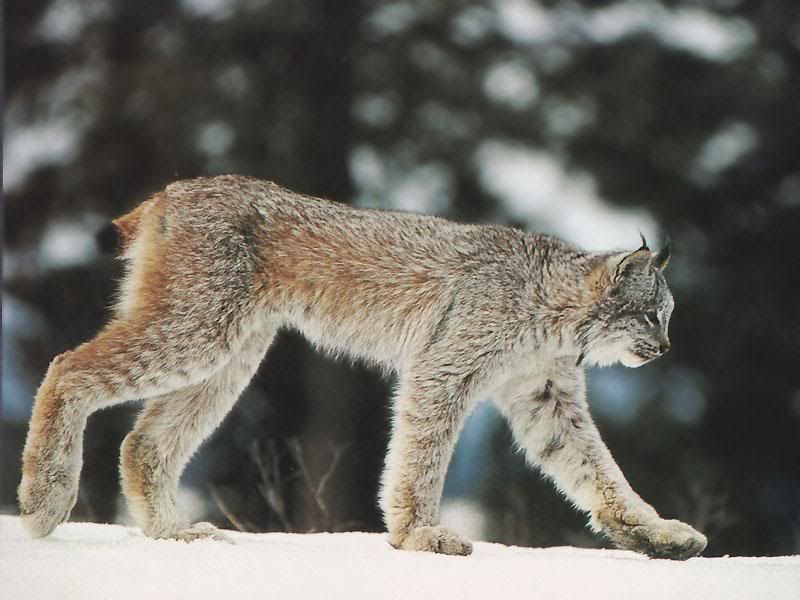

 The Accurate Reloading Forums
The Accurate Reloading Forums  THE ACCURATE RELOADING.COM FORUMS
THE ACCURATE RELOADING.COM FORUMS  Hunting
Hunting  Taxidermy
Taxidermy  bobcat mount pics
bobcat mount picsGo  | New  | Find  | Notify  | Tools  | Reply  |  |
| new member |
Bobcat season in Mo. opens up the 15th of Nov. Could you guys share your bobcat mount pictures, just to give me some ideas if I should get lucky enough. Thanks, Mike. | ||
|
| One of Us |
Mike, Here are a few pictures of my husband's taxidermy work and my rugmaking work.   [     Just a few of the many options and poses available. Kind Regards, Chris and Mary Krueger Krueger's Creations and Mary's Rugmaking Phoenix, Arizina halflingrugger@cox.net Taxidermist/Rugmaker | |||
|
| One of Us |
| |||
|
| one of us |
Hope this helps.... https://forums.accuratereloading.com/eve/forums/a/tpc/f/1821043/m/357101265 | |||
|
| new member |
Great looking mounts guys, Grafton, that second mount with right paw up, I take it that is a walking pose, thats what I'm looking for. Awesome pose and mount. | |||
|
one of us |
 Jerry Huffaker State, National and World Champion Taxidermist | |||
|
| one of us |
Those are all great looking mounts!! FYI-Before you give your bobcat to a taxidermist, be sure to look at examples of their work.........on bobcats. Bobcats are my personal quality control test for taxidermy. Look at the eyes. They are VERY hard to get correct and takes a true artist. Good Hunting, Bob There is room for all of God's creatures....right next to the mashed potatoes. http://texaspredatorposse.ipbhost.com/  | |||
|
| One of Us |
Couldn't agree with you more, Bob. When I was working Veterinary medicine for 14 years prior to my career change into taxidermy, I had worked on a big cat compound for several years and hand raised many a big cat. A big cat's face tells it all with taxidermy. Then if one can get that done well, on to anatomy. I saw an ad this weekend in a major publication with a taxidermists work who was way off on a cats anatomy. Some get so carried away with altering for a different striking pose(which is a good thing if you understand anatomy) that they never bother to take out an anatomy book for reference. Excellent words of advice Bob...look at the taxidermists work, heck look at several different taxidermists work and compare before you make a decision. Me in my big cat rearing days:    A few of Chris' big cat mounts:     Kind Regards, Mary Taxidermist/Rugmaker | |||
|
| one of us |
Beautiful animals ! Are the bobcat the same as our Scandinavian lynx? Got the same tufts of hair on the ears, and size / color look much the same. Arild Iversen. | |||
|
| One of Us |
Arild, Your post prompted me to do a little research as I had never heard of your Scandinavian Lynx: Eurasian Lynx (Lynx lynx) Range and Habitat The Eurasian lynx inhabits the forests and scrublands of western Europe, Scandinavia, Russia, Mongolia, Manchuria, Iran, Iraq, and Asia minor. They used to be widespread throughout the entire continent of Europe, and efforts are being made to reintroduce the lynx in parts of its former range, such as France, Switzerland, and Italy. Physical Appearance The Eurasian lynx is about twice the size of the North American lynx. They are usually yellowish brown to a reddish grey, with black spots and black markings on their face. The underbelly and face is a lighter cream color. Like all lynx species, they posess large ruffs of hair that project horizontally from the sides of their face, a short stubby tail with a black tip, and long black tufts of hairs projecting from the tips of their pointed ears. The backs of their ears are black with one large white spot in the middle of the back of each ear. The spotting in their coat tends to be lighter in the winter and in cats that live in cooler climates. Their spots can vary as well, and four basic coat patterns have been observed: large spots, small spots, small rosettes, and pale-spotted or "spotless" lynx. Their large feet are protected with thick fur to keep their feet warm as they walk on the cold ground, as well as acting as snowshoes that support the cat's weight in the snow. Sexual dimorphism is pronounced, with the male being significantly larger than the females. Lynxes from the northern and eastern areas of their range tend to be larger in overall size than lynxes found in southern and western areas. Lynx have 28 teeth. Scandanavian Lynx  North American Bobcat  Bobcat (Lynx rufus) Range and Habitat The bobcat ranges in North America from southern Canada to southern Mexico, and from the east to west coast in the United States. They can be found in a wide variety of habitats, from the sub-tropics to semi-desert areas, swamps, coniferous (pine) and deciduous (broad leafed) forests, and can be found near human habitats as well. They occur below 3600 m in altitude. Physical Appearance Bobcats are closely related to the lynx; however, it is half the size of the Canadian lynx. The bobcat can also be distinguished from the lynx by the markings on its tail; whereas the lynx has a black tip to its tail that goes completely around its tail, the bobcat's had a white underside with the coloration and markings on the top half. Bobcats also lack the hair on the soles of their feet that lynxes have. The tufts on the ends of their ears tend to be smaller, and their ruff not as prominent. They can be a reddish brown to a light grey, with white underside and black spots on the legs, and black markings on the face. They have the distinctive ruff on the sides of their head and black tufts on the tips of their ears. Bobcats in the southern parts of their range tend to have more vibrant markings than those further north, and tend to be smaller. Both melanistic (black) and leucistic (white) bobcats have been reported, but the melanistic ones have only been found in Florida. Like many species of wild felids, the bobcat has black ears with one large white spot in the middle of the back of each ear, called eyespots. It serves to signal to other felines the cat's mood; the spots are clearly present when the ears are laid backward so it may signal aggression. It gets its name from its short nubby tail. Bobcats from the northern parts of their range tend to be larger on average than those further south. Larger individuals also tend to occur in open areas, wheras those from forested areas are smaller. The largest bobcat on record weighed 17.6 kg (38.8 lb). ----------- Looks like your cat is much larger. They sure look similar to our bobcat in color but more like our Lynx in stature. Canadian Lynx  Kind Regards, Mary Taxidermist/Rugmaker | |||
|
| one of us |
Thank you Mary for clearing up The lynx are beautifull cats and notorious killers of hare, sheep and roe deer. Not to popular among farmers and deer hunters. A little number is hunted each winter, but they are not often seen, born survivors. To see one in the wild is always something special. Arild Iversen. | |||
|
| Powered by Social Strata |
| Please Wait. Your request is being processed... |
|

Visit our on-line store for AR Memorabilia

